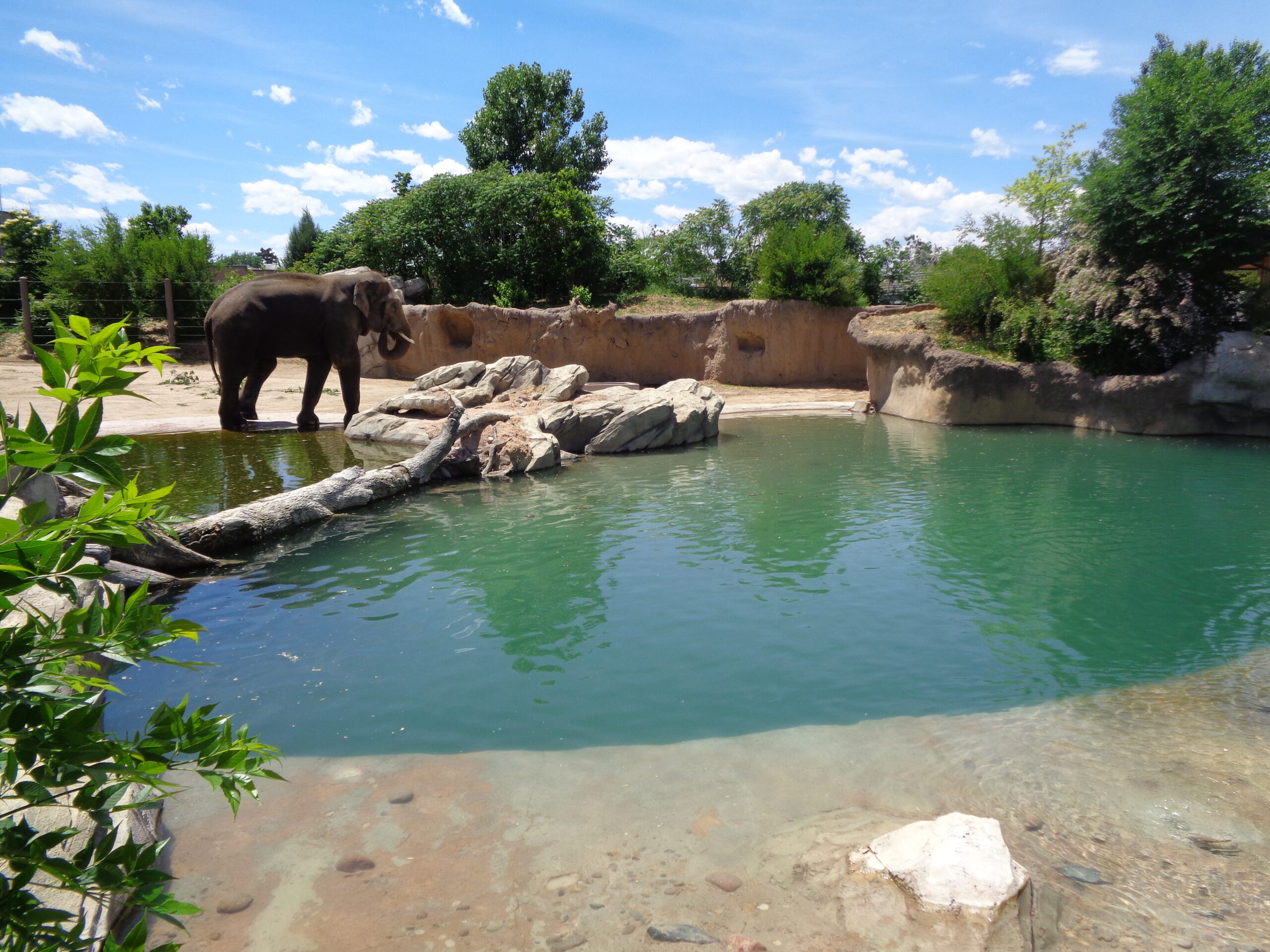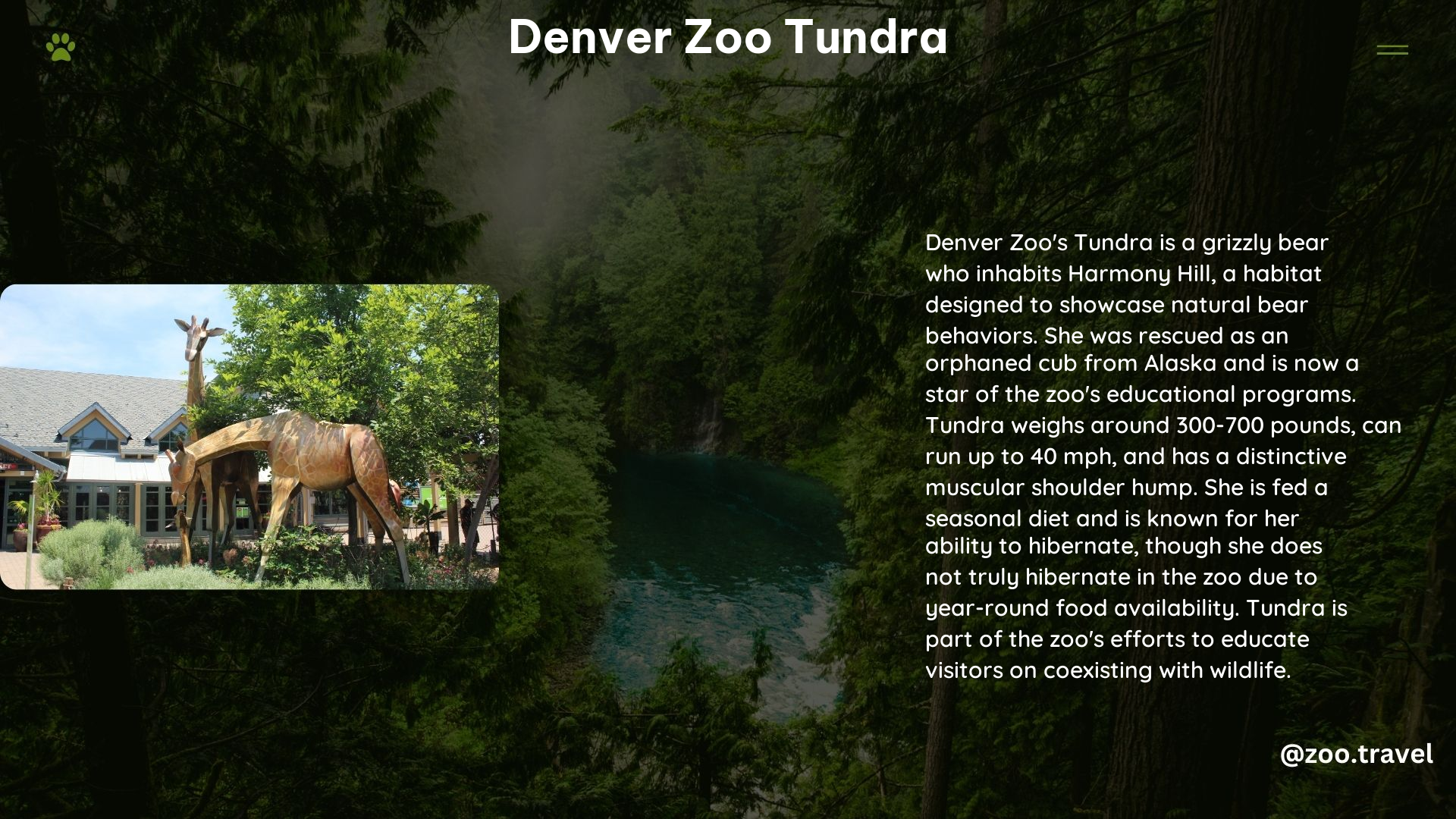Denver Zoo Tundra is a captivating grizzly bear who calls the Denver Zoo her home. As a resident of the Harmony Hill habitat, Tundra showcases the remarkable adaptations and behaviors of these majestic creatures, while also highlighting the importance of coexisting with wildlife. Join us as we delve into the fascinating world of Denver Zoo Tundra and uncover the unique features of her habitat, activities, and role in promoting environmental awareness.
Harmony Hill: Tundra’s Naturalistic Habitat

Harmony Hill, the habitat designed for Tundra, is a true marvel of the Denver Zoo. This dense forest and sub-alpine mountain region closely mimics the natural environment of grizzly bears, providing Tundra with a space that caters to her instinctual needs and behaviors. The habitat features a den for hibernation, as well as areas for Tundra to engage in her natural foraging and digging activities.
Tundra’s Enriching Activities

At Harmony Hill, Tundra is an active participant in various enrichment activities that not only keep her physically and mentally stimulated but also aid in her care and well-being.
Training and Voluntary Behaviors
Tundra’s training sessions with the zoo staff are a testament to the strong bond and trust that has been established. Through these sessions, Tundra has learned to voluntarily participate in important medical procedures, such as blood draws, making her the first bear in the history of the Denver Zoo to do so.
Foraging and Digging
Tundra’s natural instincts to forage and dig are fully embraced at Harmony Hill. Using her sharp claws, she explores the habitat, unearthing roots, invertebrates, and even tearing apart rotten logs in search of sustenance.
Hibernation
Although bears in managed care settings like the Denver Zoo do not truly hibernate, Tundra is given the opportunity to rest and sleep as much as she needs during the colder months, mimicking her natural behavior.
Harmony Hill: A Model for Coexistence
Harmony Hill serves as a powerful example of how humans can coexist with wildlife, particularly grizzly bears. The habitat showcases the unique adaptations and behaviors of these magnificent creatures, educating visitors on the importance of respecting and protecting their natural habitats.
Adaptations and Behaviors
Tundra’s presence at Harmony Hill allows visitors to witness firsthand the remarkable physical and behavioral adaptations of grizzly bears. From their large heads and muscular shoulder humps to their omnivorous diets and hibernation patterns, Tundra’s daily activities provide a glimpse into the fascinating world of these apex predators.
Promoting Environmental Awareness
By highlighting the delicate balance between humans and wildlife, Harmony Hill encourages visitors to reflect on their own role in preserving and protecting the natural habitats of grizzly bears and other species. The habitat serves as a powerful reminder that with thoughtful planning and consideration, we can coexist with these magnificent creatures.
Additional Facts about Denver Zoo Tundra
- Physical Description: Grizzly bears like Tundra can range from 3 feet to 9 feet in length and weigh between 300-700 pounds. They have large heads, large front paws with long claws, and a distinctive muscular shoulder hump.
- Diet: Tundra’s diet at the zoo includes a variety of foods such as fruits, vegetables, meat, fish, bones, nuts, lard, grass, and browse.
- Life Cycle: Grizzly bears can live up to 25 years in the wild and up to 30 years in human care. They reach sexual maturity at four to seven years of age.
Conclusion
Denver Zoo Tundra is a captivating ambassador for her species, showcasing the remarkable adaptations and behaviors of grizzly bears. Through the Harmony Hill habitat, Tundra not only thrives in a naturalistic environment but also serves as a powerful example of how humans can coexist with wildlife. By visiting Tundra and exploring Harmony Hill, visitors gain a deeper appreciation for the delicate balance of our natural world and are inspired to play a role in preserving and protecting these magnificent creatures.
